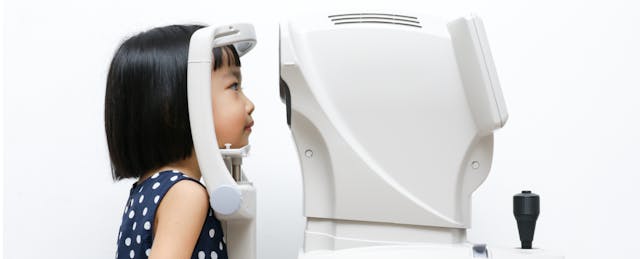Virtual reality has yet to become a reality in most classrooms. According to a 2016 survey of 38,000 U.S. educators, just around 5 percent of teachers said they used any virtual or augmented reality programs in class.
Yet with Google ramping up sales of its Expeditions Kit, and Facebook giving away 500 free Oculus Rift headsets to schools in Arkansas, the number of teachers using VR tools in U.S. classrooms could jump to more than 15 percent by 2021, predicts Futuresource, a market research firm.
What gives VR builders and their investors reasons to cheer also raises concerns, however, for health experts. A recent study was done by Children and Virtual Reality, a collaboration between researchers, VR companies, universities and health organizations, found that using VR tools could have significant health impacts on children.
“We wanted to make whatever experiences we create for children are as healthy and as right for their age as possible,” says Dr. Dylan Yamada-Rice, a senior research manager at Dubit, a consulting firm for children’s media and one of the groups involved in the study.
Started in 2015, the experiment just completed its third of four phases, where researchers worked with a group of about 20 children, aged 8 to 12, to observe health and safety issues posed by the use of VR tools. The first two research phases involved surveying more than 1,000 U.S. and U.K. children, aged 2 to 15, about their knowledge of and interest in emerging VR tools. Then they explored how children used different types of headsets including Google Cardboard, Oculus Rift and HTC Vive.
What the researchers found in the third phase of the study, published last October, was that usage of VR headsets could impact a child’s vision, balance and spatial awareness—concerns they say educators should consider before adopting VR technology.
Researchers from the University of Leeds conducted pre- and post- eye examinations for 20 children, and tested their depth of perception and sense of balance, before and after they used the headsets. For most students, there were no significant differences. However, for children who displayed issues with balance, spatial awareness, vision and depth of perception in the pre-test, those problems may have intensified after using virtual reality tools.
“We had one child whose eyesight differed pre- and post-test. He already had bad eyesight to begin with,” says Yamada-Rice, noting that this student showed problems with nearsightedness after playing with the headset, something not common for children.
To test their depth of perception, researchers asked children to find numbers or shapes embedded in dot patterns. Then they asked students to use the headsets for about 20 minutes before repeating the dot test. One child, who displayed problems with depth perception during the pre-test, also displayed significant issues after using the headset.
“What we are looking at is making sure there is not a lingering effect once you take that headset off,” says David Kleeman, a senior vice president at Dubit. He notes that students struggling with depth of perception may run into objects or trip over things.
Researchers also found risks for young people who had no pre-existing health issues, noting that their balance and depth of perception could be affected by engaging in content created for adults. For instance, children who entered VR experiences created for adults often struggled to stay balanced as they reached for objects within the fabricated realms that were beyond their body’s extent. Researchers suspect that this effect lingered after the headset came off.
“There was one girl who had balance problems post-test,” says Kleeman, describing how the young girl fell over while using the program. “Because of the way it was built, she had to overreach to do something and fell over. It may have been a lingering effect from that.”
Kleeman and Yamada-Rice also note that children appeared uncomfortable in virtual spaces where there was no ground, or when they could not see their feet.
“You go into Google Earth, and you’re sort of just floating in space,” says Yamada-Rice, describing what some students felt. “And they are like, ‘Why am I here? And why haven’t I been given a platform to stand on so I don’t feel like I am going to fall down?’ That, not understanding where you are grounded, they didn’t like that very much.”
Despite these incidents, these are health and safety concerns that manufacturers can fix, she believes. For starters, they can design features that lock children out of the VR experience after 15 minutes, so they take a break. She is optimistic that these lessons can help VR developers create content more suitable for children.
The research group notes that further research is needed for to learn exactly how long youth with pre-existing health issues should engage with VR tools. Yamada-Rice worries for children using the tools at home, but she doesn’t suspect that this will be a big problem for educators whose students will be on headsets for short periods of time.
For teachers adopting VR, Yamada-Rice recommends that they make sure the tools used in classrooms are calibrated for young people. She also notes that it is important to create optimal spaces in the classroom where children cannot run into dangerous objects. Hosting media literacy discussions around VR content, experiences, and how the systems work is another way educators can reduce health risks.
“Those are simple things teachers can do to allow children to understand how VR works,” says Yamada-Rice. “It also gets them thinking about the quality of content themselves. Then they can say, ‘this is good’ and ‘that is not good’ and why so that they are not just passive consumers.”


